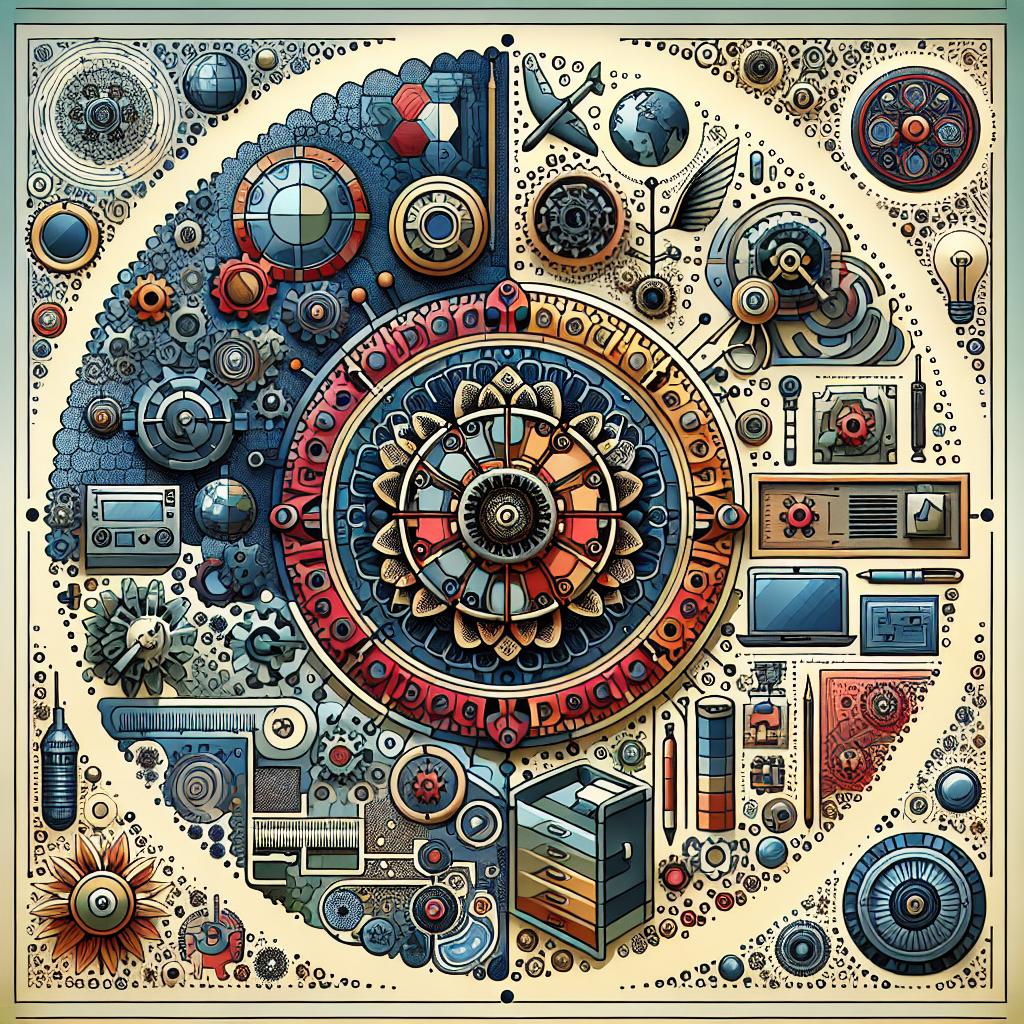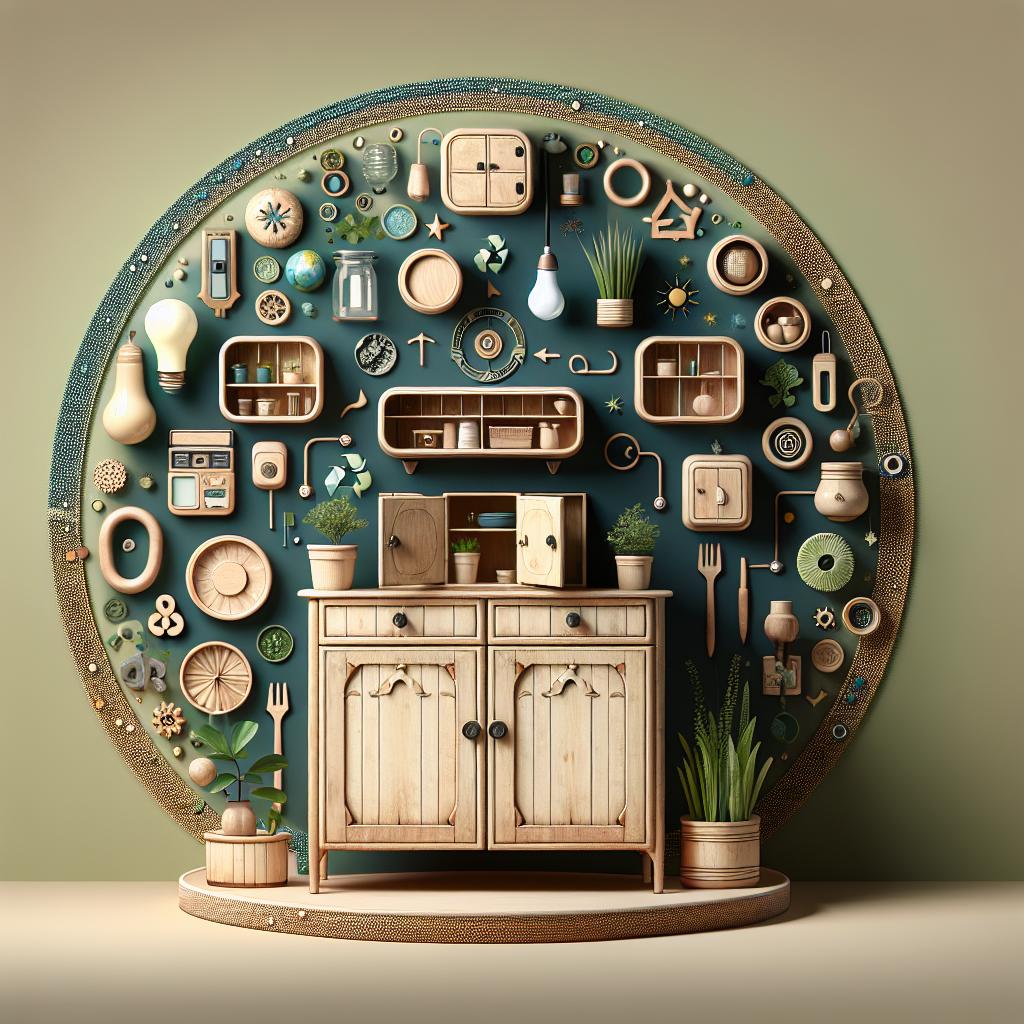Transforming Cabinets into Furniture: A Creative Revolution for Your Space
In the realm of home decor, innovation knows no bounds. As we navigate the intricacies of our living spaces, the quest for versatility often leads us to reimagine the potential of everyday items. Among these hidden treasures are the unassuming cabinets, typically relegated to the role of storage solutions. However, an emerging trend celebrates their transformation into unique, functional furniture pieces that breathe new life into any room. This article delves into the art of converting cabinets into furniture, exploring the creative possibilities and practical considerations that accompany this fascinating endeavor. Whether driven by necessity or a desire for aesthetic enhancement, the journey of repurposing cabinets invites us to rethink our spaces and unleash the boundless potential of our homes.
Transforming Cabinetry into Functional Furniture
Fusing functionality with aesthetics, the journey from traditional cabinetry to versatile furniture opens a world of possibilities for your home. Imagine transforming a standard cabinet into a vibrant storage bench, perfect for the entryway or living room. By adding a comfortable cushion and decorative pillows, this simple piece can serve as both a practical storage solution and a cozy seating area. Other ideas include repurposing cabinets into stylish side tables or even workstations, where you can house your work essentials while maintaining an organized appearance. The key is to see beyond the structure and envision its potential in various spaces.
Additionally, the incorporation of creative finishes and hardware can elevate a cabinet’s appearance dramatically. Consider these enhancements:
- Paint or stain to match your interior décor.
- New knobs or handles to update the style swiftly.
- Built-in lighting for added ambiance and functionality.
With these techniques, you can not only increase the utility of your cabinetry but also infuse a personalized touch into your living spaces.
| Transformation Ideas | Suggested Use |
|---|---|
| Cabinet to Storage Bench | Entryway seating and storage |
| Cabinet to Side Table | Living room décor and utility |
| Cabinet to Workspace | Home office solutions |
Designing Versatile Pieces for Every Room
Transforming cabinets into multifunctional furniture can elevate any space, allowing for a seamless blend of storage and style. By reimagining these often-overlooked pieces, you can create stunning accents that serve multiple purposes. Consider the following ideas:
- Cabinet Bar Station: Convert a sturdy cabinet into a chic home bar by adding shelves for glassware, a small fridge, and decorative elements.
- Entryway Console: Repurpose a low cabinet for an entryway table, adding hooks above for keys and a mirror for last-minute checks.
- Workspace Oasis: Turn a tall cabinet into a dedicated office space by integrating a drop-down desk and organizing supplies inside.
When designing these versatile furniture pieces, paying attention to aesthetics and functionality is essential. Opt for finishes and colors that harmonize with your existing décor, ensuring that each piece is not only practical but also visually appealing. Here’s a simple comparison of cabinet styles that inspire transformation:
| Style | Best Use | Features |
|---|---|---|
| Antique | Living Room | Intricate carvings, warm woods |
| Modern | Home Office | Sleek lines, minimalistic design |
| Rustic | Kitchen/Dining | Reclaimed wood, vintage hardware |

Techniques for Customization and Refinement
Transforming cabinets into stunning furniture pieces requires a combination of ingenuity and practical techniques. Start by choosing the right cabinet; look for sturdy structures with intricate designs or sleek lines that suit your vision. Once you have selected your canvas, consider the materials you wish to incorporate. Here are some options that can elevate your project:
- Wood Stain – Enhances grain patterns and adds depth.
- Paint – A fresh color can revitalize the entire piece.
- Textiles - Upholster doors or shelves to introduce warmth and comfort.
Customization can extend beyond surface treatment. Innovative hardware choices can significantly impact the overall aesthetic. Replace standard knobs or handles with vintage or modern alternatives that resonate with your style. Consider adding open shelf sections or integrating additional storage with decorative boxes or baskets. To provide an overview of functional additions, see the table below:
| Feature | Benefit |
|---|---|
| Adjustable Shelves | Versatile storage options for different item sizes. |
| Hidden Compartments | Increased security for valuable items. |
| Lighting | Enhances visibility and adds ambiance. |

Sustainable Practices in Upcycling Cabinets
Upcycling cabinets into stylish furniture not only breathes new life into forgotten pieces but also significantly contributes to a sustainable lifestyle. By choosing to repurpose existing materials rather than purchasing new items, you’re reducing demand for new resources and minimizing waste. Consider these sustainable practices for your upcycling journey:
- Selective Salvaging: Prioritize cabinets that are sturdy and have unique features, transforming their old charm into modern appeal.
- Eco-Friendly Finishes: Use non-toxic paints and finishes to enhance the look while ensuring safety for your home and environment.
- Creative Redesign: Reimagine cabinets as innovative pieces like benches, coffee tables, or even wall art displays.
- Functional Additions: Integrate new elements such as cushions or adjustable shelving to enhance both utility and aesthetic.
When planning your project, consider a few additional tips that highlight the benefits of upcycling:
| Tip | Benefit |
|---|---|
| Combine Materials | Creates unique, multifunctional designs. |
| Community Sourcing | Promotes sharing and reducing waste. |
| DIY Workshops | Encourages skill sharing and collaboration. |
Q&A
Q&A: Converting Cabinets into Furniture
Q1: What does it mean to convert cabinets into furniture?
A1: Converting cabinets into furniture is the art of transforming standard cabinetry into multifunctional pieces that enhance living spaces. For example, an old cupboard can become a stylish bar, while a tall cabinet may be reimagined as a unique bookshelf or entertainment center. This creative process not only breathes new life into outdated items but also promotes sustainability by minimizing waste.
Q2: Why should someone consider this conversion project?
A2: There are several compelling reasons! First, it allows for personalization; you can customize the piece to fit your style and needs. Second, it’s a cost-effective solution, as reusing existing materials is often cheaper than buying new furniture. this approach contributes to eco-friendliness by reducing landfill waste and promoting upcycling.
Q3: What types of cabinets work best for conversion?
A3: Almost any cabinet can be converted, but some popular choices include old kitchen cabinets, storage armoires, and unused bathroom vanities. Look for sturdy structures and ample space. The simpler the design, the easier it often is to modify. Additionally, cabinets with interesting features, like unique doors or intricate moldings, can add flair to the final product.
Q4: Can you provide some examples of cabinet-to-furniture conversions?
A4: Absolutely! Here are a few inspiring ideas:
- Entertainment Center: Hollow out an old armoire to house a TV and gaming equipment, adding shelves or hooks for extra organization.
- Coffee Bar: Repurpose a kitchen cabinet by painting or staining it, adding a countertop for brewing, and installing hooks for mugs.
- Bookshelf: Transform a tall cabinet by removing doors and adding a fresh coat of paint, then showcasing books and decorative items.
- Desk: A shallow cabinet can become a chic workspace with the addition of a tabletop surface and a few storage compartments.
Q5: What are some tips for starting my own cabinet conversion project?
A5: Begin by choosing a cabinet that resonates with you and identifies its potential for conversion. Second, sketch your ideas or create a mood board to visualize the project. Gather necessary tools and supplies, such as paint, hardware, and any additional materials needed for modifications. Lastly, embrace creativity; don’t be afraid to experiment and let your personality shine through your design!
Q6: Are there any skills or tools needed for this kind of project?
A6: Basic woodworking skills can be helpful, but even beginners can dive in with a little practice and research. Essential tools often include a screwdriver, paintbrushes, a saw, and sandpaper. Many tutorials available online can guide you through more complex tasks, breaking down the process step by step.
Q7: How do I maintain my newly converted cabinet furniture?
A7: Maintenance generally involves regular cleaning and occasional touch-ups. Depending on the finishes used, you may need to treat wood surfaces with polish or apply protective coatings periodically. Keep an eye out for wear and tear in high-use areas and address any issues promptly to extend the life of your creation.
Q8: What if I don’t have experience in furniture design or woodworking?
A8: No worries! There are plenty of resources available for beginners. Workshops, online courses, and community classes can provide valuable guidance. Additionally, local maker spaces may have tools and support to help you on your journey. Embracing imperfections can also be part of the charm in DIY projects!
Q9: Lastly, how can I share my cabinet transformation with others?
A9: Sharing your transformation can inspire others in their creative endeavors! Consider posting before-and-after photos on social media, writing a blog detailing your process, or joining online DIY communities. These platforms are great for showcasing your work and connecting with fellow enthusiasts who can offer support and feedback!
To Conclude
In a world where creativity knows no bounds, converting cabinets into furniture opens up a treasure trove of possibilities for those willing to explore the art of transformation. Whether you’re an avid DIYer or just looking to refresh your space on a budget, the beauty of repurposing cabinets lies not just in their functional benefits but in the stories they can tell. Each piece can reflect your unique style, serve a purpose, and contribute to a more sustainable lifestyle by giving new life to old materials.
As you embark on your journey of conversion, remember that the key is to envision the potential that lies within. Start with a clear idea, gather your tools and materials, and let your imagination guide you. With a dash of creativity and a bit of elbow grease, what once held dishes or clutter can now be the centerpiece of your home.
So, roll up your sleeves and dive into this inspiring adventure. Allow the simple act of transforming cabinets into furniture to spark joy in your space and in your heart. The world of repurposing awaits—go forth and create!

